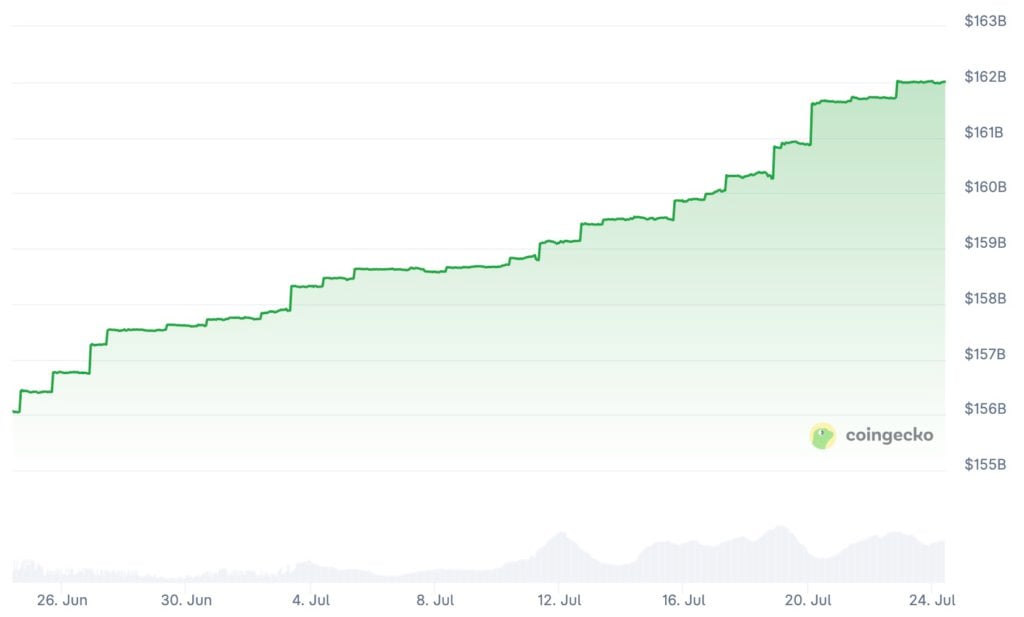According to Coingecko data, the US dollar stablecoin USDT issued by Tether has reached a market value of $162 billion this week, continuing to set a new historical high. After Trump officially signed the GENIUS Act in July, establishing a nationwide stablecoin regulatory standard, Tether CEO Paolo Ardoino stated in a Bloomberg TV interview on Wednesday:
We are smoothly developing our domestic US strategy. We will focus on the US institutional market, providing efficient stablecoins for payments, interbank settlements, and transactions.

Tether's Dual-Track Layout: New Currency + Transition Period
Tether, which was fined nearly $60 million for false statements and lack of transparency in 2021 and banned from operating in New York, now sees the GENIUS Act as a springboard to wash away its past.
According to informed sources, Tether will issue a "US version stablecoin" fully compliant with new regulations by the end of 2025, while using the three-year compliance period for foreign issuers to allow the current circulating USDT to enter the US in a limited manner.
The GENIUS Act requires stablecoins to maintain full reserves, undergo regular audits, and comply with strict AML and KYC regulations. After approval, even non-bank entities can potentially issue stablecoins and enjoy traditional protections like FDIC insurance. Morgan Lewis analysis suggests that the new regulations will formally incorporate stablecoins into payment, cross-border remittance, and interbank settlement processes, while indirectly driving demand for US Treasury bonds due to large holdings.
Circle's Response: Licensing and Financial Deep Integration
USDC, issued by Circle with the second-largest circulation (about $64.7 billion), has long established institutional trust through transparency. Currently, Circle is applying for an OCC National Trust Bank license and collaborating with BlackRock, BNY Mellon, and others to integrate stablecoins into traditional settlement and fund management.
Circle is one of the biggest beneficiaries of the GENIUS Act, which has boosted its stock price. However, analytical data shows that while Tether's market value is only about twice that of Circle, its 2024 profits were 80 times higher. Whether Circle can continue to expand revenue and increase issuance remains a market focus.
The Dawn of the Stablecoin Golden Age
The GENIUS Act removes regulatory risks that have distorted market choices. The next step is whether the US and other countries are willing to incorporate stablecoins into daily settlement processes. Tether must prove that past issues have been thoroughly resolved, while Circle needs to catch up in revenue efficiency and innovation speed.
Regardless of who leads, federal-level regulation has pushed stablecoins toward the mainstream financial center, and the market is moving towards a new, more immediate and efficient norm.







